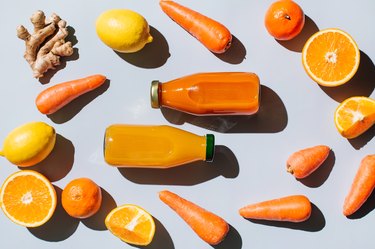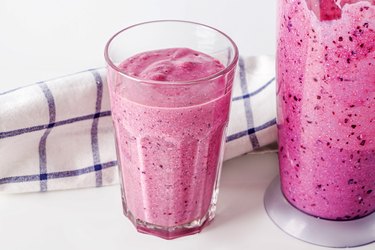
Is there an easier meal-to-go than a smoothie? It sounds almost too good to be true: Fill your blender with fruit (along with grains, greens or even protein powder) and milk, then voilà! You've got something healthy and nourishing to fuel your day. There are so many smoothie variations that the options might feel overwhelming at times, but we've taken the guesswork out of whipping up a perfect blend. Read on to learn the fundamentals of smoothie-making and pick up tips for creating your own spectacular sip.
At first blush, smoothies seem like such a straightforward concept that the very idea of a smoothie recipe feels unnecessary. Just add a bunch of things you like into the blender, give 'em a buzz and you'll have a good smoothie. Right?
Video of the Day
Video of the Day
In practice, that's not exactly the case. Some combinations work really well, but others fall short in texture, flavor or both. It all comes down to an understanding of the basics: If you get flavor proportions right and understand which ingredients help control the texture of a finished smoothie, it's hard to go wrong. Here are some tips and tricks to get you started.
1. Choose the right liquid base
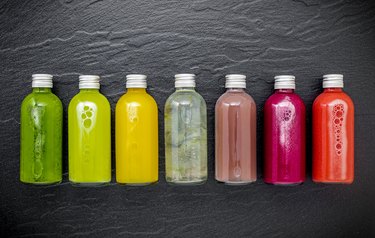
Every smoothie needs some form of liquid to help it blend to a drinkable consistency. Milk (both dairy and non-dairy) and fruit juices are classic choices for smoothies—and they'll work just fine. For a perfectly thick smoothie with a touch of creaminess, though, it's hard to beat Greek yogurt. Luckily, Greek yogurt is available in a variety of flavors (though you can opt for plain if you want to keep things simple). If you prefer a sweeter, more slush-like consistency, opt for a simple fruit base such as orange juice with ice.
2. Layer ingredients
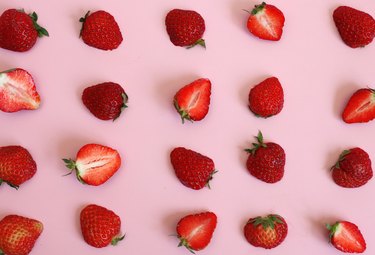
Place liquid in the blender first. This helps blades create the visible vortex (like water going down a drain) that pulls other ingredients onto the blades and pulverizes them. Next, add any troublesome fibrous ingredients like rolled oats, leafy spinach or kale and give them a quick buzz to thoroughly blend. Even the biggest green smoothie enthusiasts aren't keen on ropy chunks of spinach clogging up their straws. Next, add fresh fruit, optional add-ins, and ice or frozen fruit. Process in the blender until it all comes together, then thin or thicken the smoothie (if necessary) until it reaches your ideal consistency.
3. Focus on ratios
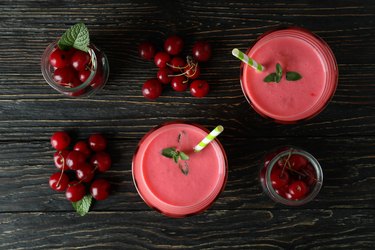
The blending process involves less guesswork if you start with a proper ratio of ingredients. A solid rule of thumb is two parts fruit, one part liquid and one part everything else combined. There will certainly be variation in base proportions—for example, a breakfast smoothie made with lots of juicy berries will be thinner than a banana smoothie, so you might opt for less liquid and more thickening ingredients.
4. Mix up your fruit
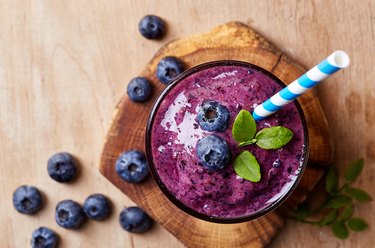
Fruit is a natural choice for smoothies because they provide body and sweetness while masking the taste of other ingredients (looking at you, kale!) that might not hold quite the same allure for your taste buds. Banana smoothies are the most universal because bananas have an agreeable combination of nutrition, body and sweetness. That said, many other fruits work beautifully. Use blueberries and raspberries for a delicious "mixed berry" vibe, or make it tropical with mango and melons.
5. Don't overdo the ice
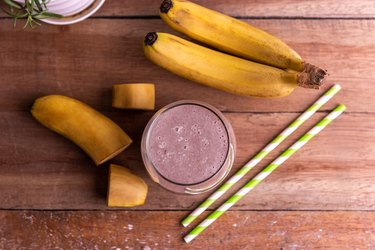
Ice cubes are a great smoothie thickening ingredient because they help give your smoothie some body and a slushy texture. But ice rapidly becomes water once blended, so a smoothie made with ice will require less liquid than one using frozen fruit for its chilling and thickening element. Ice will also dilute your flavors if you use too much, which is why many recipes lean into frozen fruit. You can up your game by freezing some portion of the liquid you plan to use (orange juice or other fruit juices are best, but coconut water freezes beautifully as well), which provides both ice and flavor.
6. Opt for "double-duty" ingredients
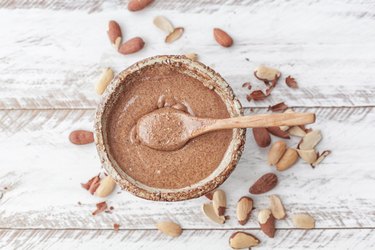
Is almond butter a thickening ingredient? Yes. Is it a nutritional add-in for its protein? Also yes. Similarly, Greek yogurt is a go-to liquid but also a thickening ingredient and a nutritional add-in (protein, calcium and more). Balancing these ingredients to create a creamy smoothie that tastes good and is just the right texture is something of an art—but you're halfway there if you begin with the right proportions.
7. Use frozen fruits
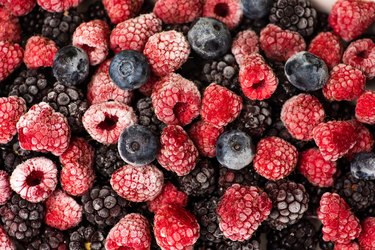
Fresh fruit always feels like the best and healthiest choice when it's available, but that's not necessarily so—and frozen fruit has some real advantages for smoothie-making. Fruit sold fresh isn't always picked at its peak, simply because retail shelf life is a consideration. Frozen fruit, on the other hand, is usually picked at or near full ripeness and processed immediately. (In short, it's not a compromise.) It will also give your favorite smoothie a better consistency because, while fresh fruit can become frothy when puréed, frozen fruit retains a denser, more smoothie-appropriate texture.
Tip
Fruit smoothie recipes often call for both fresh and frozen fruit. If you have a solid base of frozen fruit ready to go, simply add whatever’s local and seasonal—berries or stone fruit, perhaps—to mix things up. If berry smoothies are your thing, for example, you might progress from strawberry to blueberry smoothies and end up with blackberries during high summer.
8. Try something new
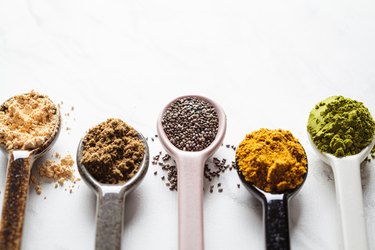
There are so many things you can add to a smoothie aside from fruits and juice. You've probably heard of leafy greens such as spinach making their way into smoothies, but the unique add-ins don't stop there. For a protein boost, try peanut butter, other nut butters or—of course—protein powder. We recommend turmeric for its anti-inflammatory properties, while additions such as flax seeds and chia seeds are great for fiber. If sweetness is what you're after, add honey or agave for a delicious natural boost.
9. Freeze ingredients ahead of time

Do you love starting your day with a strawberry banana smoothie? Buy strawberries when they're in season locally and freeze them (they'll be cheaper and tastier). Bananas are almost always marked down when they start to go brown, which is also when they're most flavorful. Peel and stash them in the freezer so you'll always have a few on hand for smoothies and baking. Because they're sweet and relatively high in fiber (meaning they'll give you a perfect consistency with minimal help from other ingredients), frozen bananas are a core ingredient in a lot of smoothie recipes.
10. Add some tea...yes, tea!
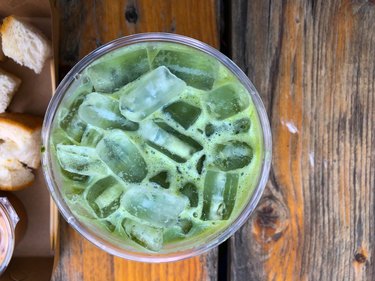
Want to streamline your morning even further? Freeze cubes of green tea or Earl Grey tea and use those in your smoothie, where they'll add flavor and astringency while providing the caffeine boost many of us rely on in the morning. (Herbal teas work too, if you don't need caffeine.) Just be aware that the tannins in tea don't always play nicely with fruits like mango or persimmons, which have tannins of their own (or subtle bitter notes) that are accentuated by tea.
11. Pick the right blender
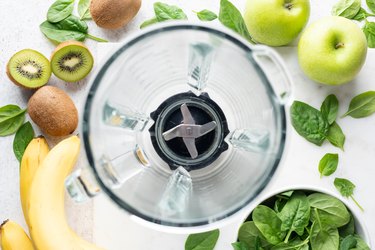
The popularity of smoothies means that appliance manufacturers have ensured that even low-priced machines can crank out a seamless smoothie, so you can find something functional at any price point.
Tip
Jazz era bandleader (and engineer) Fred Waring popularized the blender in the 1930s, having partnered with its original inventor to refine the design. Waring blenders are still around and, like their high-powered rivals from Vitamix and Blendtec, they’ll chew through just about anything you throw at them. Does that mean you need to invest in an industrial-strength machine to make the perfect smoothie? Absolutely not.
12. Consider smoothie bowls
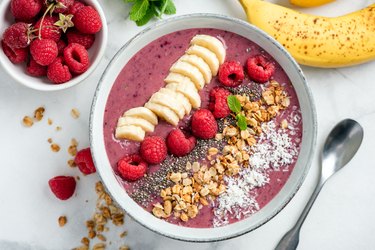
If you like extra-thick smoothies for textural reasons but don't like straining to suck it up a straw, consider making a smoothie bowl instead. Simply blend up your favorite combo of ingredients as usual, but pour the blend into an open bowl (or wide-mouthed Mason jar) instead of a tall drinking glass. Garnish the top with your favorite fruits, fresh herbs or other ingredients and eat it with a spoon instead of a straw. It's easy, it's pretty, it looks great on social media and it's a fine alternative if you have time to sit down instead of eating on the run.
